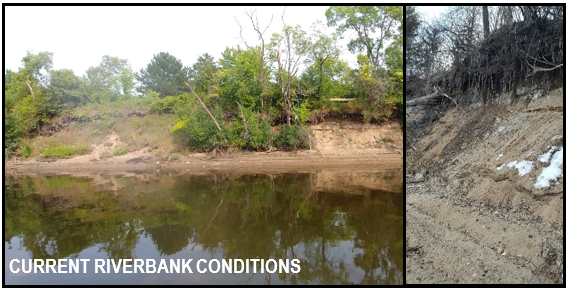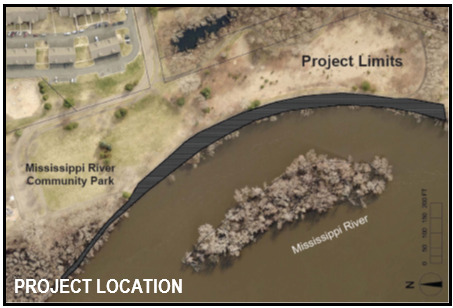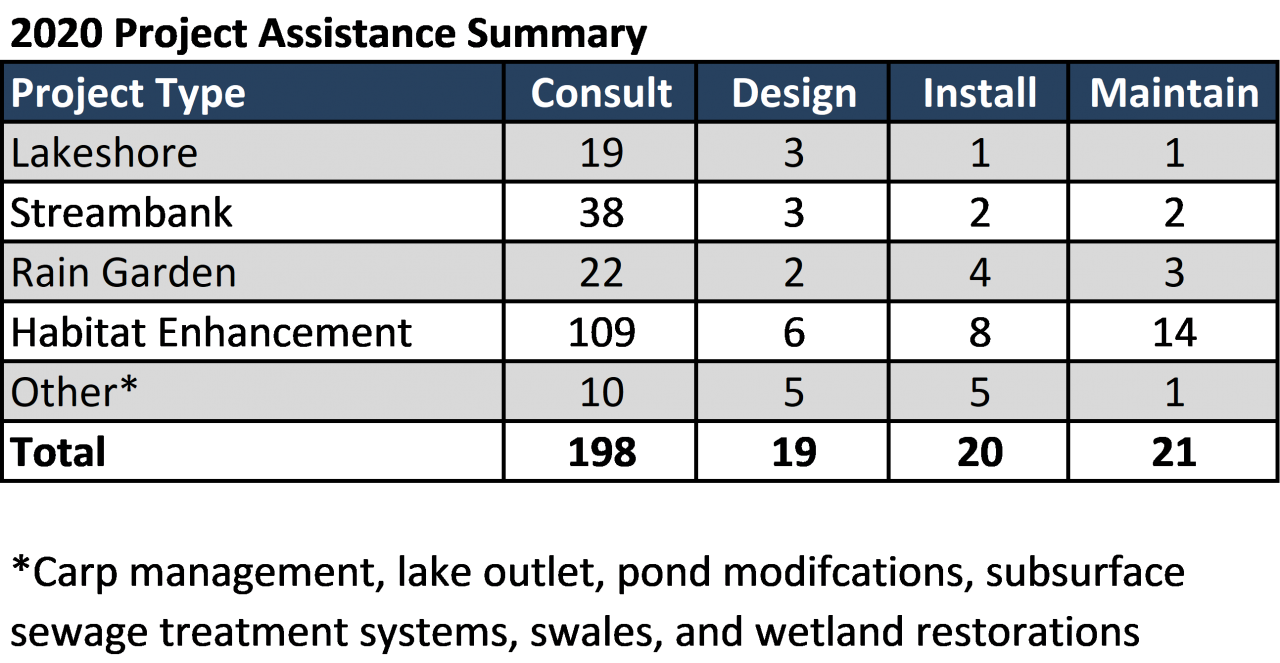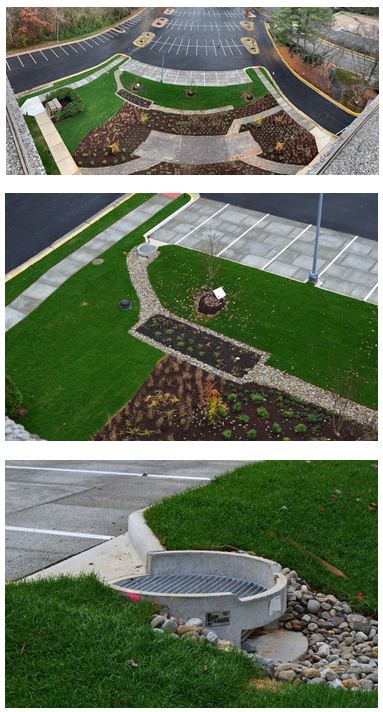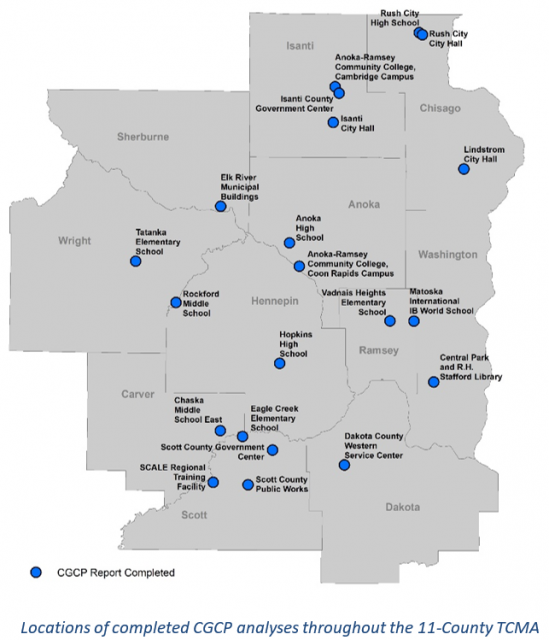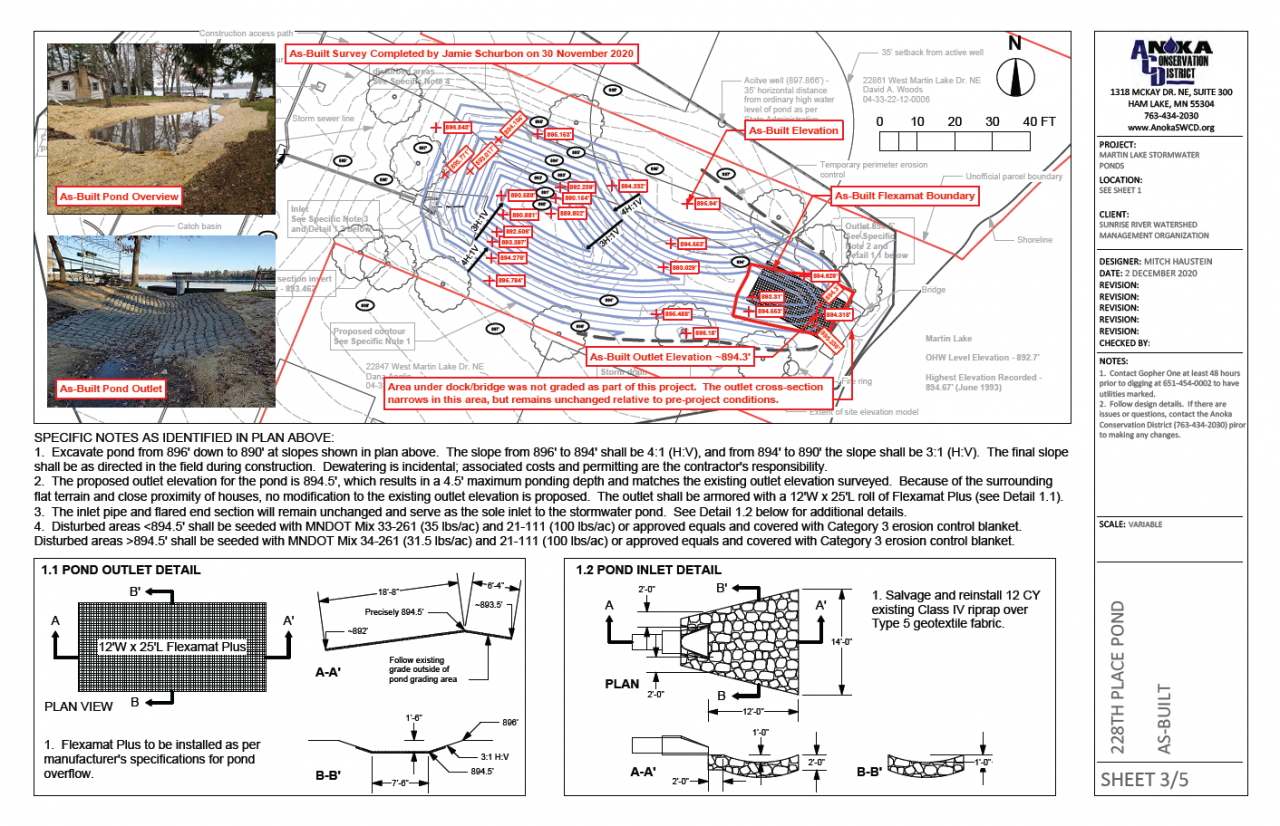The project design and bid packet to stabilize approximately 1,500 linear feet of severely eroding riverbank within Mississippi River Community Park in Anoka were recently finalized. Contractor bids are due in mid-April, and project construction is anticipated this summer during periods of low water to maximize riverbank access. Below is an overview of the planned stabilization process.
- A section of the walking trail will be removed during construction but will be replaced following stabilization of the riverbank.
- Mature tree and vegetation removal will be required for project access and grading.
- The nearly vertical bank will be graded to a stable slope.
- Hard armoring with rock at the bottom of the slope will provide protection against high flows and ice. The rock will be placed over a layer of filter fabric for protection of the underlying soil.
- Live cuttings and plant plugs will be planted just above the riprap for additional stability, nearshore wildlife habitat, and a more natural appearance.
- The slope above the riprap will be vegetated with a native seed mix, shrubs, and trees.
- Additional features of the stabilization include strategic placement of boulders to provide recreational access points for fishing and viewing the river as well as small outcroppings to create a diversity of flows and enhance aquatic habitat.
Eroding riverbanks contribute to the Mississippi River's sediment and turbidity impairments through direct loading of sediment and nutrients that degrade overall water quality as well as aquatic and nearshore habitat. Stabilization of actively eroding riverbanks is one of the most cost-effective practices to improve water quality because 100% of the sediment reaches the waterway.
The project is funded by a Clean Water Fund grant, a Watershed Based Funding grant, and match from the City of Anoka. Watch for more updates from ACD and the City of Anoka as the project progresses.
May 11th 2021 Update:
A total of 12 bids were received and reviewed by staff from the City of Anoka, Hakanson Anderson, and Anoka Conservation District. The bids were competitive and many were within the available budget. The City of Anoka City Council approved the bids and awarded the project to the low bidder at the May 3rd meeting. A pre-construction meeting will be held with the selected contractor within the next month to review all project elements and ensure the project gets off to a smooth start.
